15 Giants and Trolls
Giants and Trolls
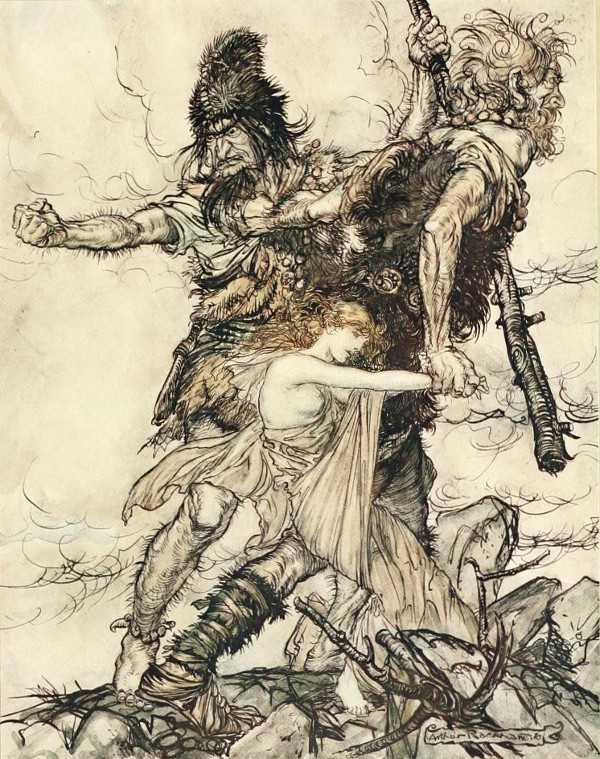
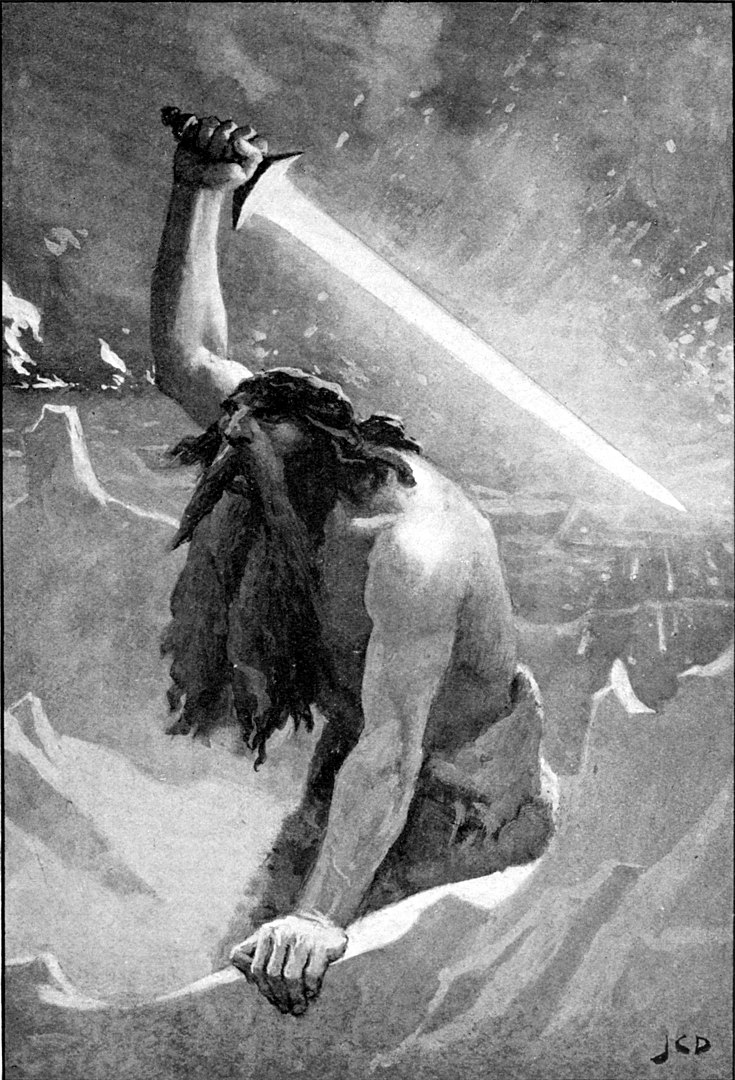
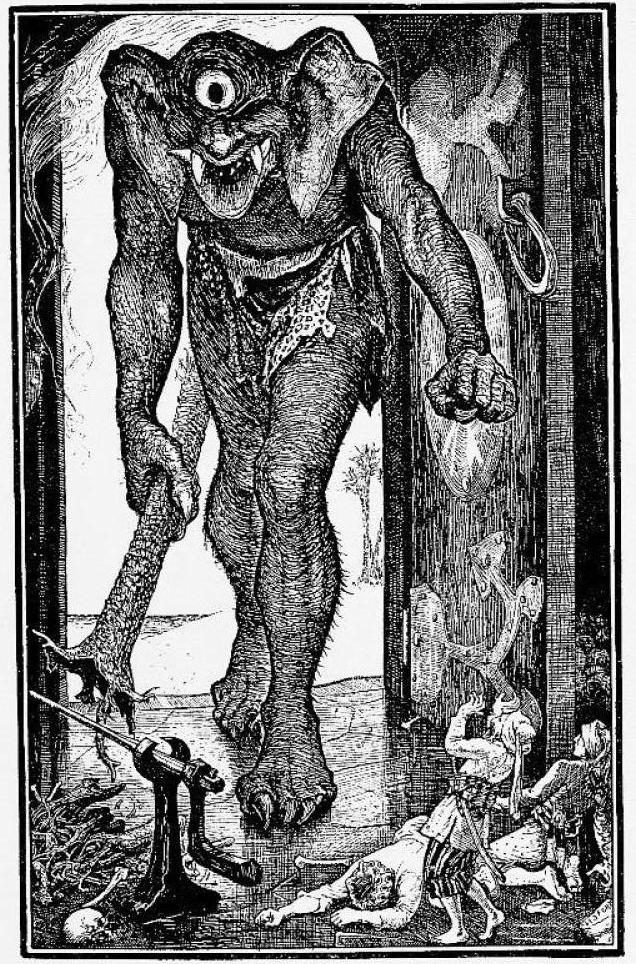
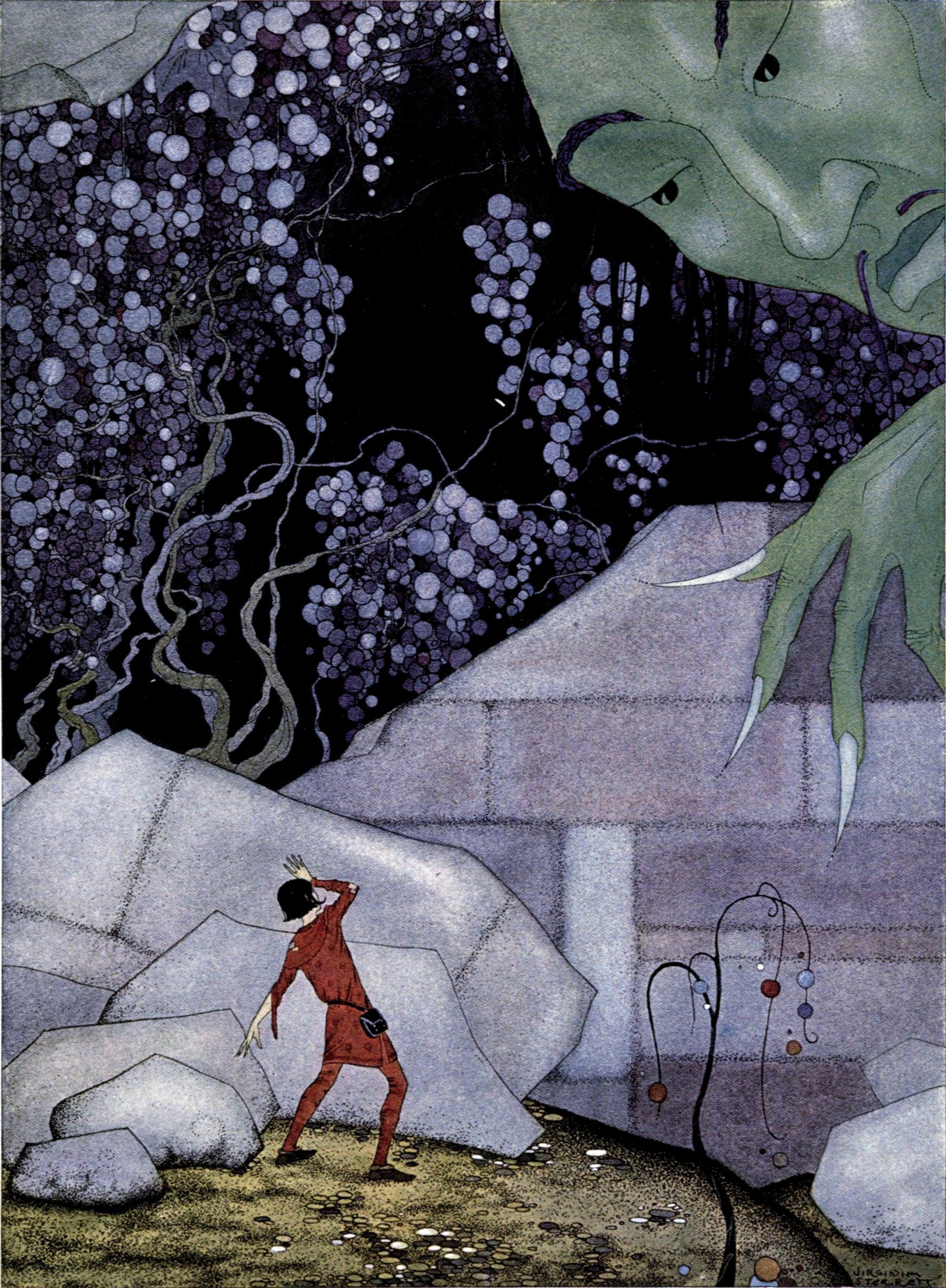
Old French Fairy Tales (Project Gutenberg ebook Version).
https://www.gutenberg.org/files/30129/30129-h/30129-h.htm
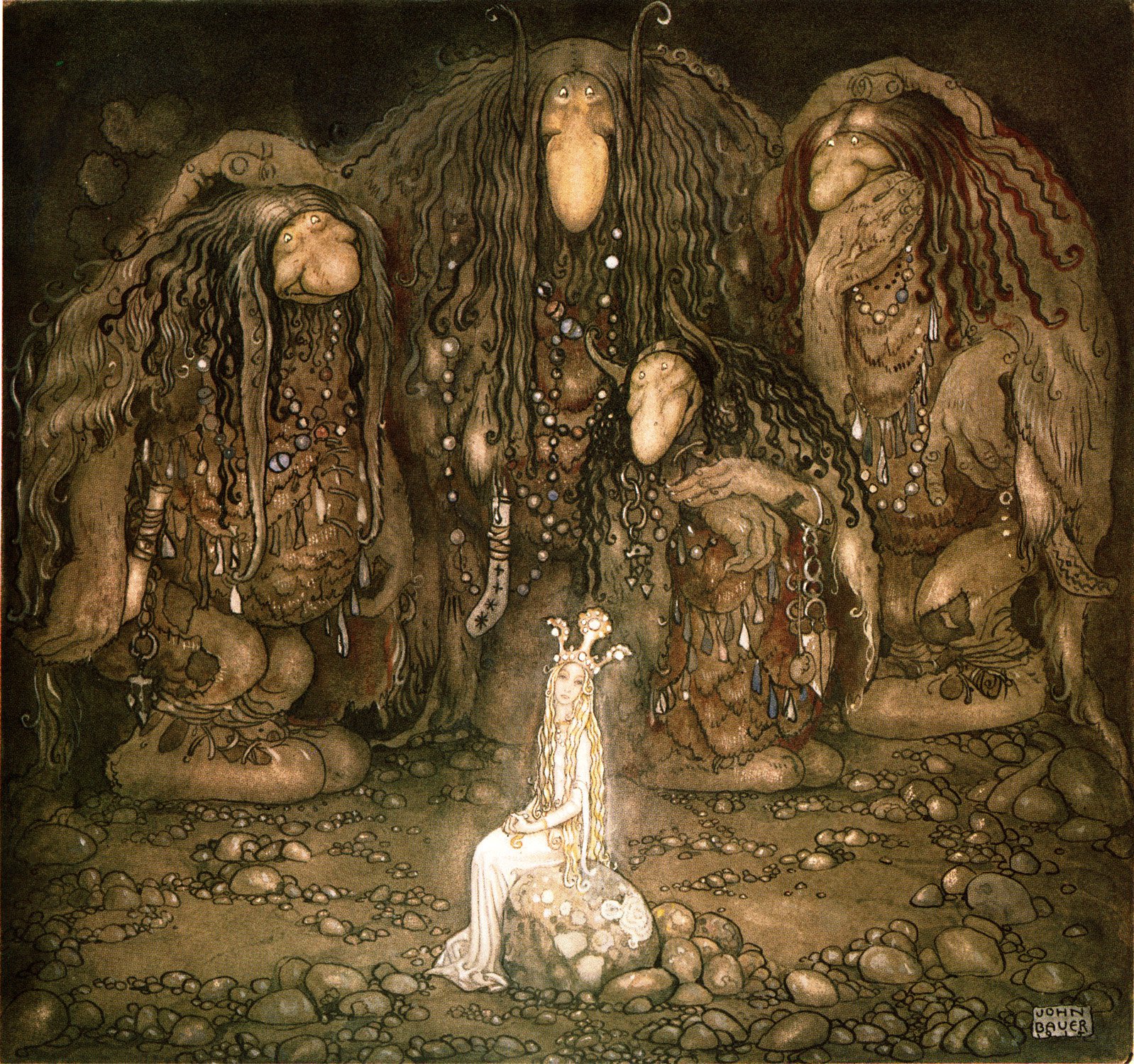
“Look at them,” troll mother said. “Look at my sons! You won’t find more beautiful trolls on this side of the moon.” 1915
For more information about John Bauer’s illustrations please open the link below.
https://johnbauerillustrations.com/
Norse Myths and Tales
Popular Tales from the Norse Sir George Webbe Dasent (1817-1896).
https://www.gutenberg.org/cache/epub/8933/pg8933-images.html
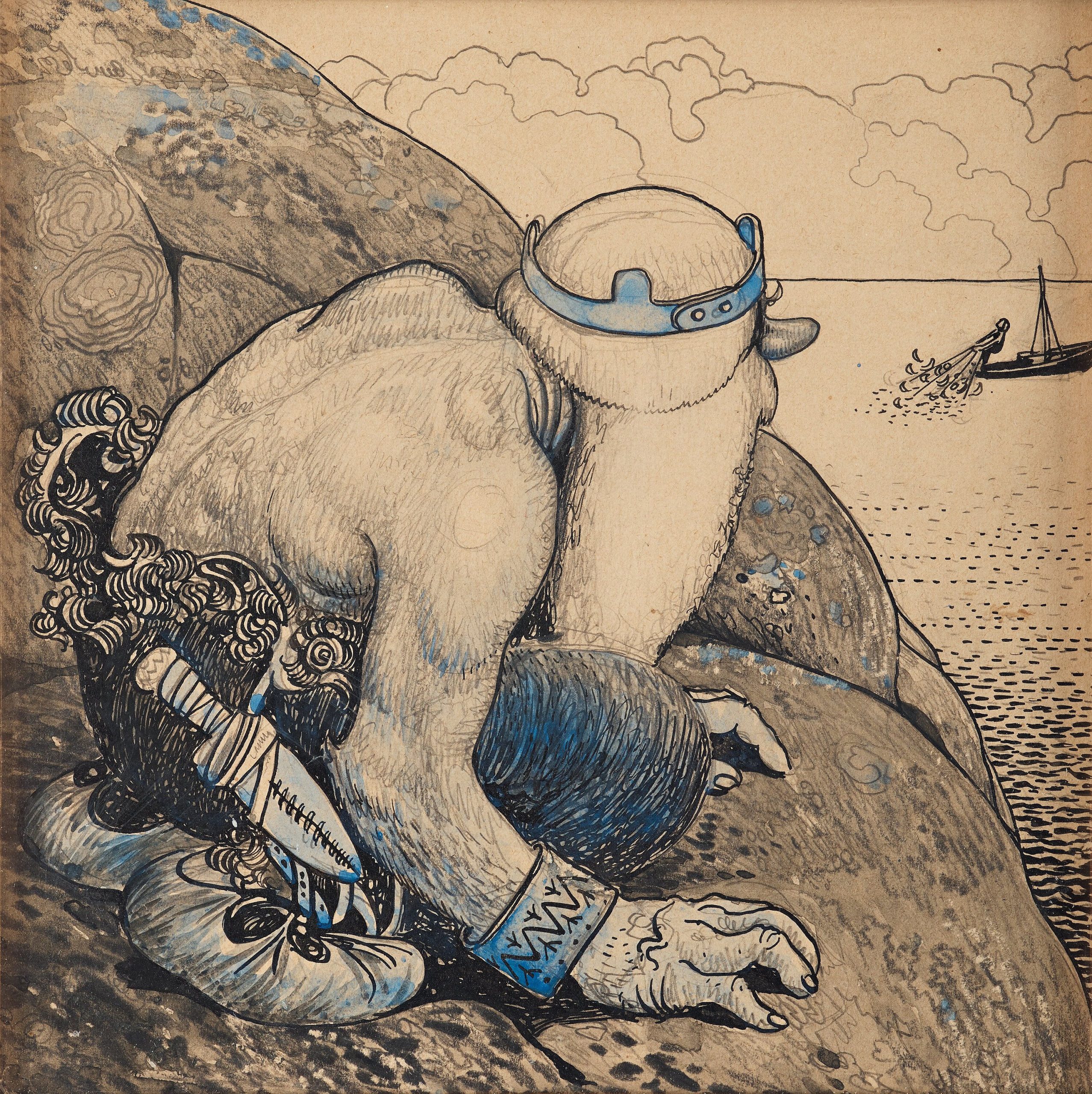
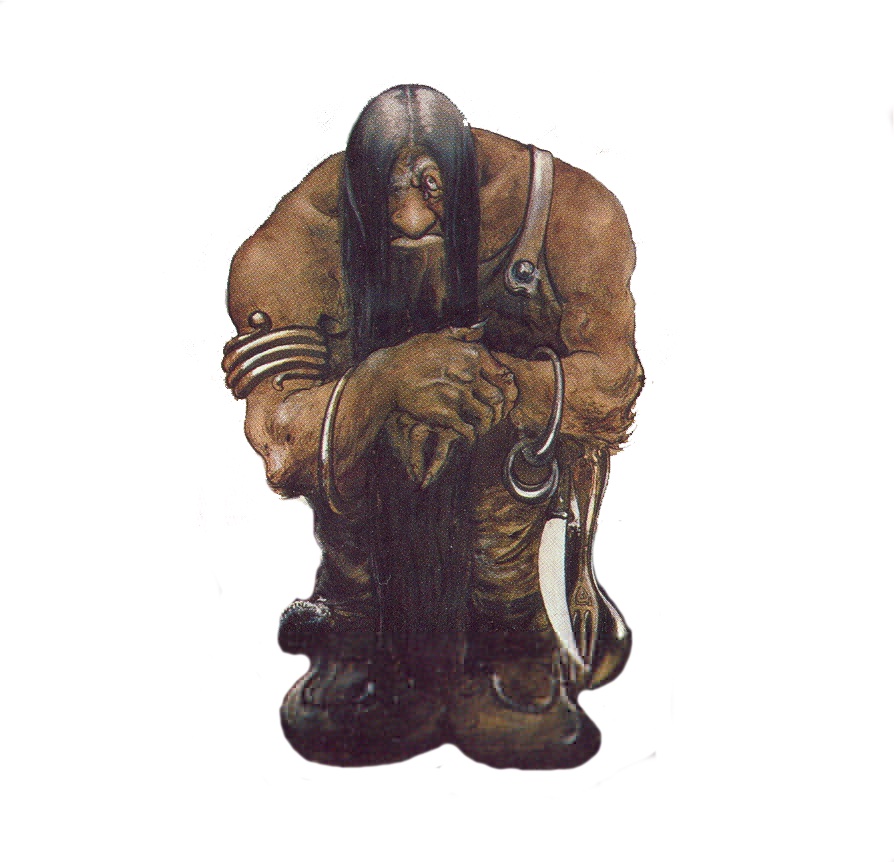
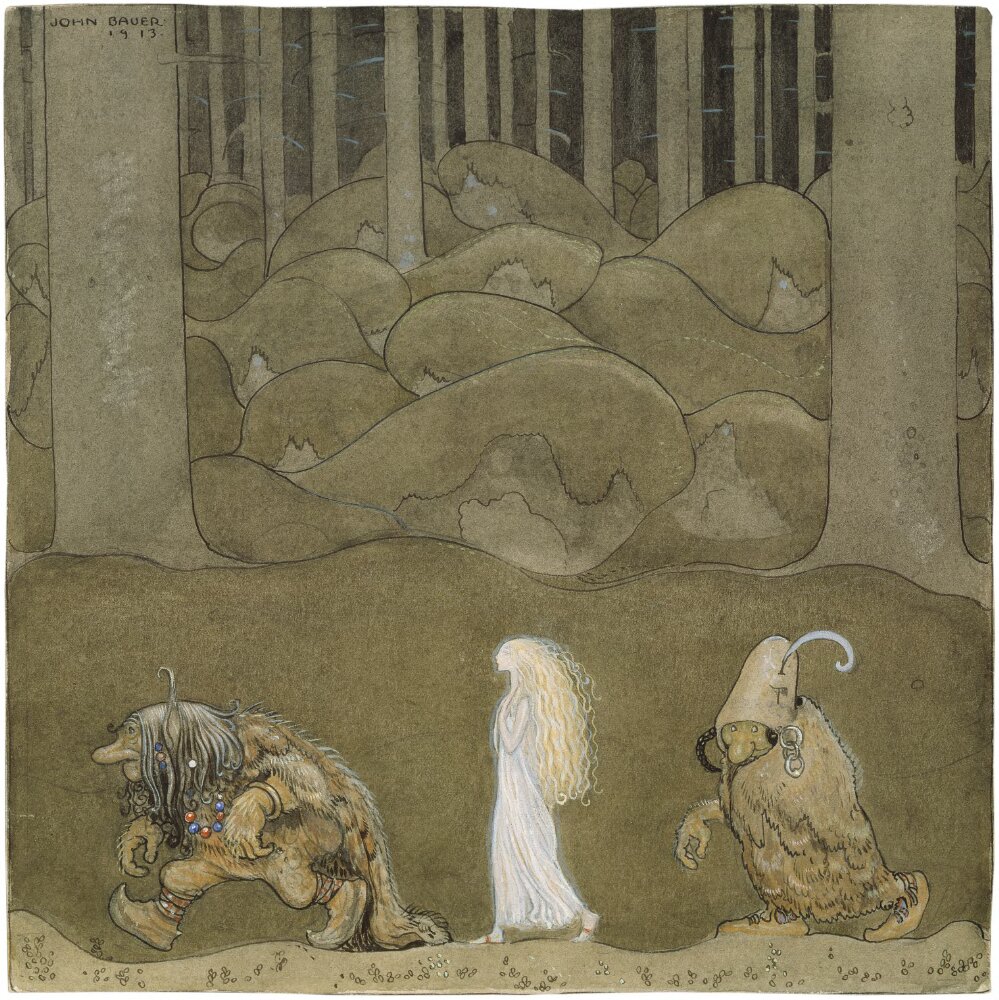
Swedish Folk Tales and Stories by Helena Nyblom can be found if you open the link below. The Translation from Swedish to English can be made.
https://www.gutenberg.org/files/53173/53173-h/53173-h.htm
***************************************************************************
John Bauer (1882-1918), the artist
The gifted artist John Bauer´s magical illustrations of Swedish fairytales and legends has a major influence on how we trolls, gnomes, pixies, fairies, and other forest deities are envisioned today in art, film, and literature. John Bauer’s forested fantasy world reflects a keen insight and sensitivity for the natural world. Tragically at 36 years old, John Bauer lost his life during a sea storm on Lake Vattern. The storm also claimed the lives of his son Bengt and his wife the artist and model Ester Ellquivst (1880-1918). John Bauer’s inspirational art can be seen at Jōnköping Art Museum, Jönköping, Sweden.
For more information about the Swedish artist John Bauer (born in Jönköping, southern Sweden) , please open the link below. https://upload.wikimedia.org/wikipedia/commons/2/26/TheodorKittelsen-Kvitebj%C3%B8rnKongValemon%281912%29.JPG
For more of John Bauer’s illustrations, please open the link below.
https://www.wikiart.org/en/john-bauer
********************************************************************
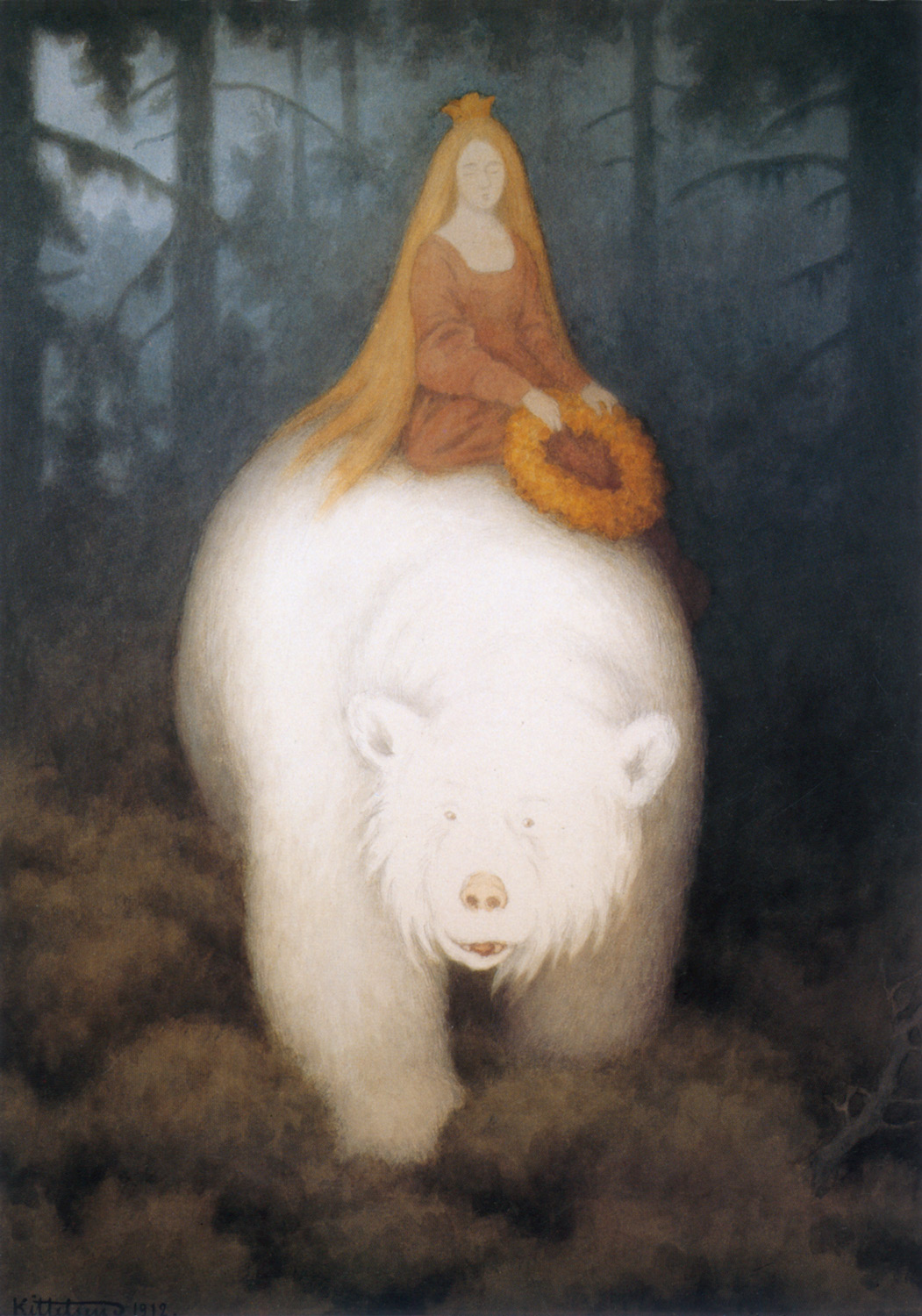
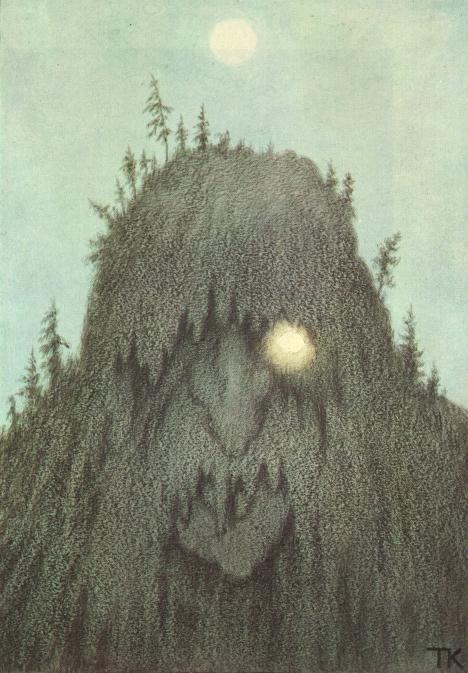
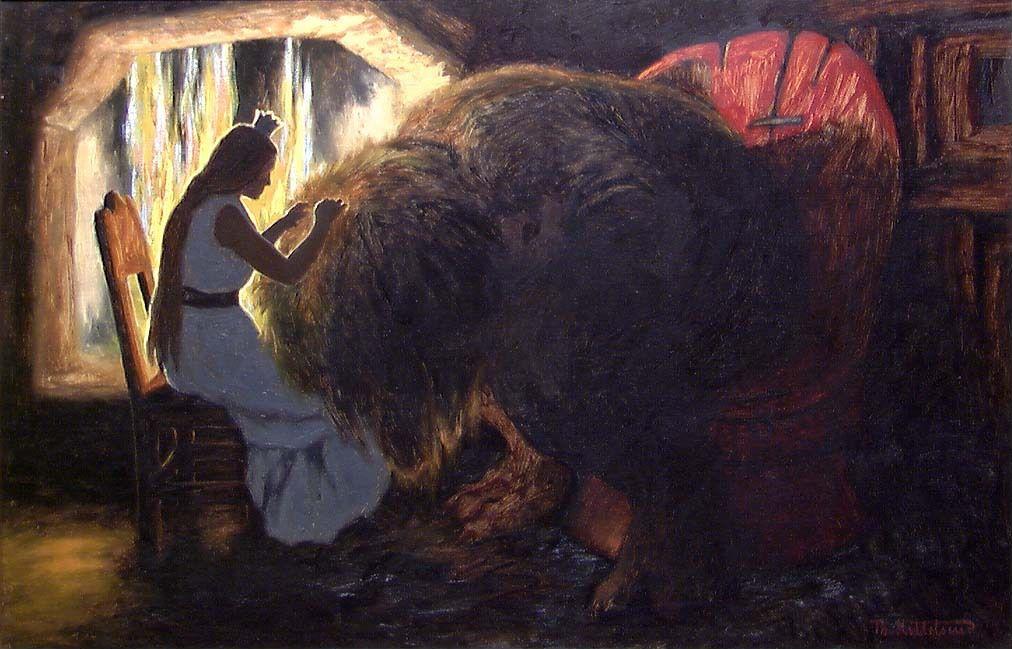
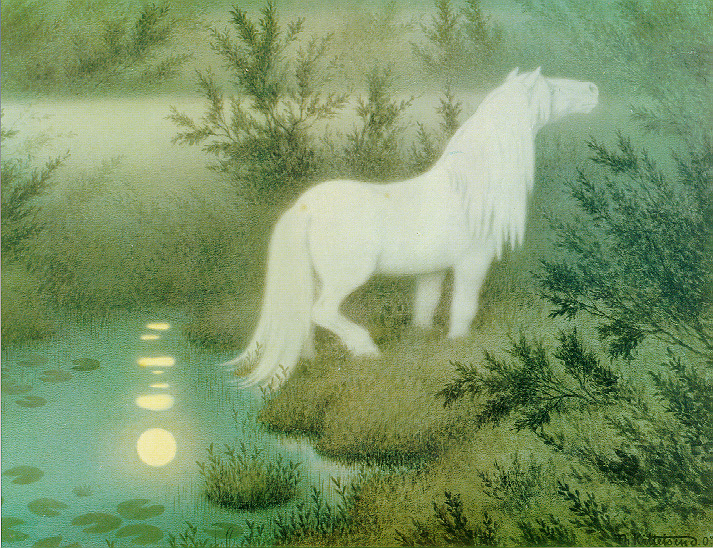
1907 http://kittelsen.efenstor.net/albums/troll/normal_noekken_som_hvit_hest_01a.jpg
Nix (singular: Neck; feminine: Nixie) are spirits who dwell in quiet rivers and lakes in England, Germany, and Scandinavia. Their love of water is equaled only by their love of music, and their beautiful songs often draw listeners to the banks of their watery homes. See more
By Theodor Kittelsen – http://kittelsen.efenstor.net/albums/troll/normal_noekken_som_hvit_hest_01a.jpg, Public Domain, https://commons.wikimedia.org/w/index.php?curid=1340860
For more information about the Norwegian artist Theodor Kittlesen please open the link below.
https://en.wikipedia.org/wiki/Theodor_Kittelsen
For more information about artists’ depictions of fairy tale worlds, please open the link to the Norwegian National Museum of Art, Architecture, and Design.
https://www.nasjonalmuseet.no/en/collection/articles/fairytale/
Illustrations by Edmund Dulac (1882-1953) from Tales of the Arabian Nights Edmund Dulac
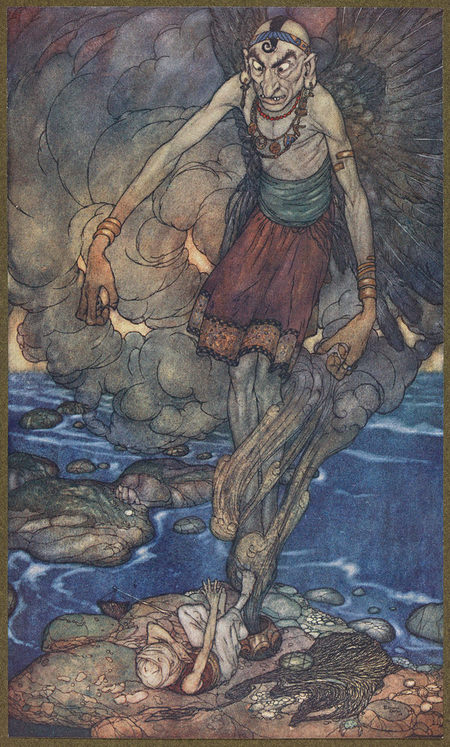
Illustrated books by Edmund Dulac in the Public Domain:
https://www.gutenberg.org/files/45907/45907-h/45907-h.htm
Excerpt from The Fisherman and the Genie retold by Laurence Houseman (illustrated by Edmund Dulac). Stories from The Arabian Nights. Garden City Publishing Co. 1907.
A poor fisherman finds a mysterious vessel in his catch one day:
“The sight cheered him. ‘This,’ thought he, ‘I can sell in the market, where I may get for it enough to buy a measure of corn; and, if one is to judge by weight, what lies within may prove yet more valuable.
Thus reckoning, he prised out the stopper with his knife, and turning the vessel upside down looked for the contents to follow. Great was his astonishment when nothing but smoke came out of it. The smoke rose in a thick black column and spread like a mist between earth and sky, till presently, drawing together, it took form; and there in the midst stood a mighty Genie, whose brows touched heaven while his feet rested on the ground. His head was like a dome, his hand were like flails, and his legs like pine trees; his mouth was black as a cavern, his nostrils were like trumpets, his eyes blazed like torches, and his wings whirled round and over him like the simoon of the desert….” (Housman, 1907, pp.28-29).
*********************************************************************
For the complete stories of The Arabian Nights (Housman and Dulac, 1907). Open the link below.
https://archive.org/details/storiesfromarabi00hous_0/page/n5/mode/2up
To see more of Edmund Dulac’s illustration from The Arabian Nights, please open the link below.
https://www.nocloo.com/edmund-dulac-stories-from-arabian-nights-1907/
Audio Version of The Fisherman and the Genie and other Tales (Internet Archive).
Sinbad the Sailor and other tales.
https://www.gutenberg.org/cache/epub/47285/pg47285-images.html
************************************************************************
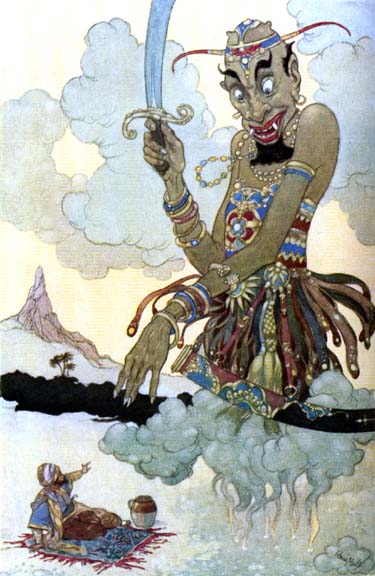
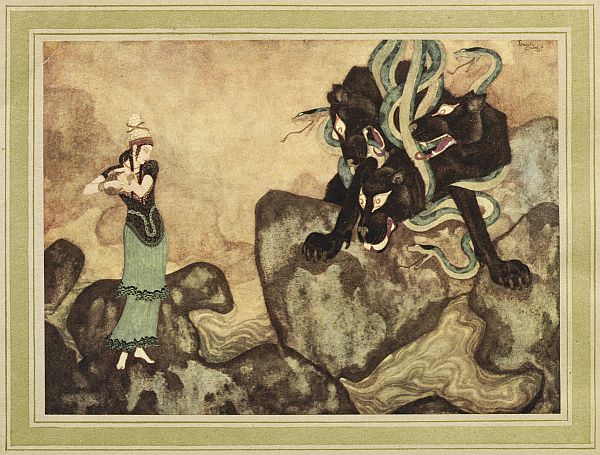
“Cerberus, the triple-headed, snake-haired, black dog guarding the gates of Hades, was a mythological monster of fierce and terrible aspect. When the shades of the departed from the upper world were ferried across the River Styx by old Charon the boatman, Cerberus lay quiet and let them pass unchallenged. He knew them: they were shades brought in regular order, by Charon, and, as such, they were allowed to enter Hades. But, if they wished to retrace their steps, and gain the upper world again—this was a labour, this was a task not so easily accomplished, for Cerberus would bar their way; his mane would rise and his jaws would gape, and there was no passing this terrible gatekeeper.” ( Dulac, p. 93 in Edmund Dulac’s Picture-Book for The French Red Cross. Alpha Editions, 2021, p. 93).
Edmund Dulac’s Picture Book for the French Red
Crosshttps://www.gutenberg.org/cache/epub/45907/pg45907-images.html
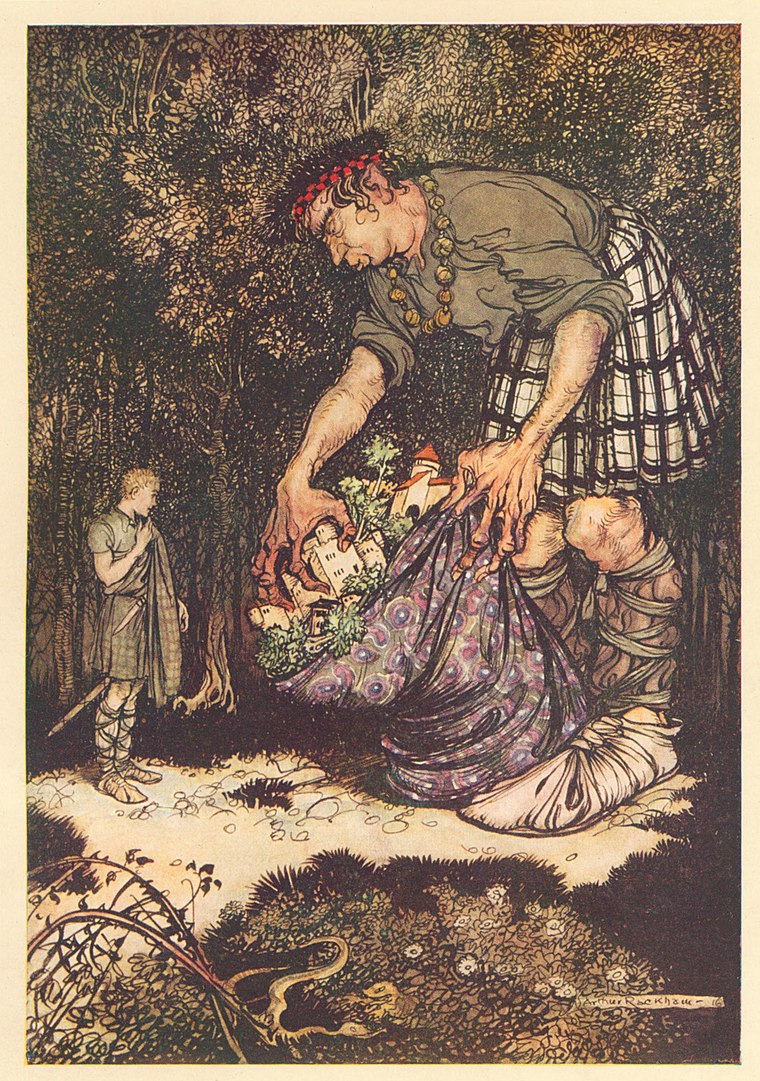
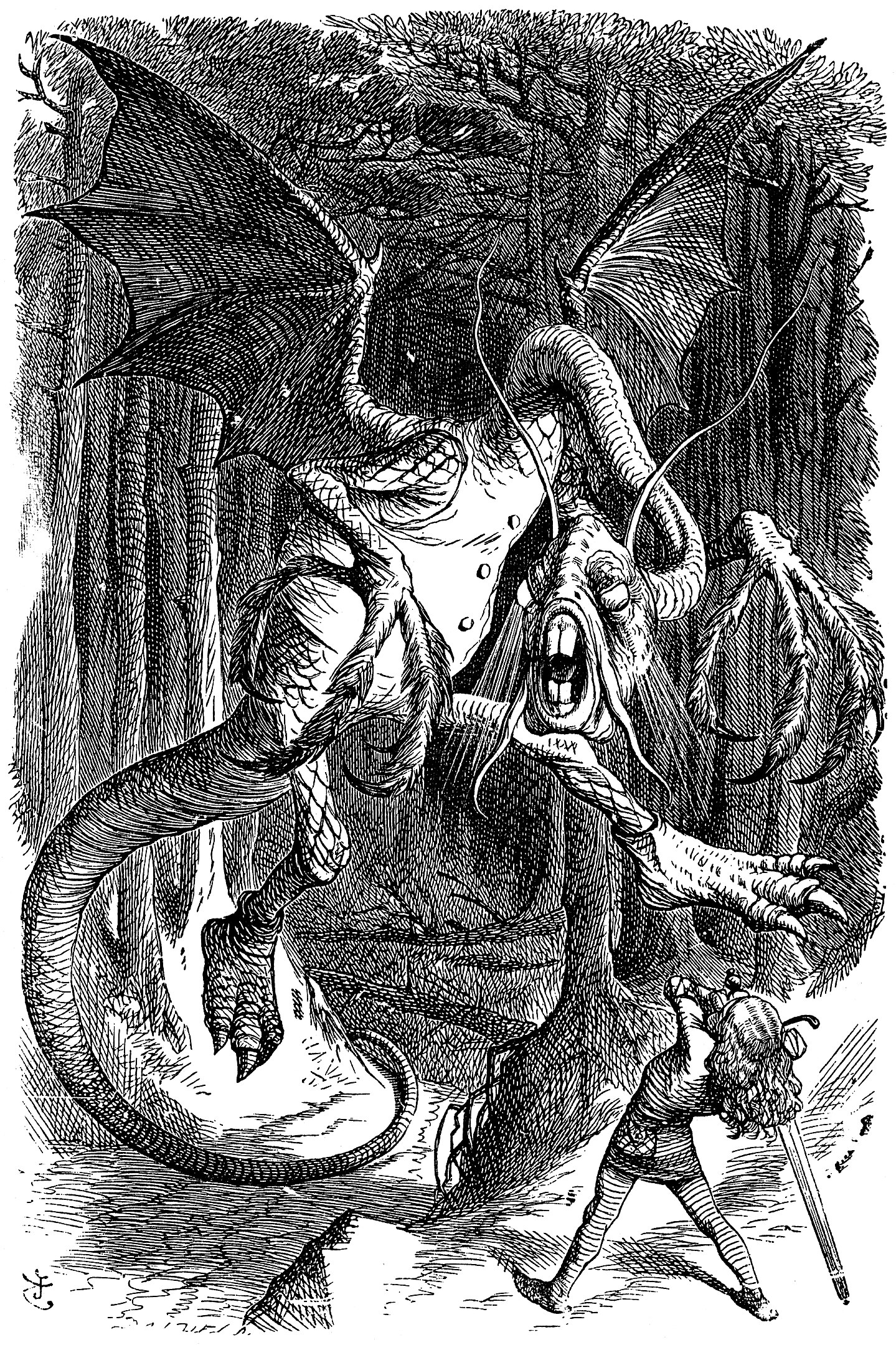
“Jabberwocky” by Lewis Carroll (1832-1898)
`Twas brillig, and the slithy toves
Did gyre and gimble in the wabe:
All mimsy were the borogoves,
And the mome raths outgrabe.
“Beware the Jabberwock, my son!
The jaws that bite, the claws that catch!
Beware the Jubjub bird, and shun
The frumious Bandersnatch!”
He took his vorpal sword in hand:
Long time the manxome foe he sought —
So rested he by the Tumtum tree,
And stood awhile in thought.
And, as in uffish thought he stood,
The Jabberwock, with eyes of flame,
Came whiffling through the tulgey wood,
And burbled as it came!
One, two! One, two! And through and through
The vorpal blade went snicker-snack!
He left it dead, and with its head
He went galumphing back.
“And, has thou slain the Jabberwock?
Come to my arms, my beamish boy!
O frabjous day! Callooh! Callay!’
He chortled in his joy.
`Twas brillig, and the slithy toves
Did gyre and gimble in the wabe;
All mimsy were the borogoves,
And the mome raths outgrabe.
Retrieved March 28, 2023 Internet Archive. Public Domain.
https://ia800108.us.archive.org/12/items/Jabberwocky_201802/Jabberwocky.pdf
For more information about “Jabberwocky” please open the Wikipedia link below.
https://en.wikipedia.org/wiki/Jabberwocky

